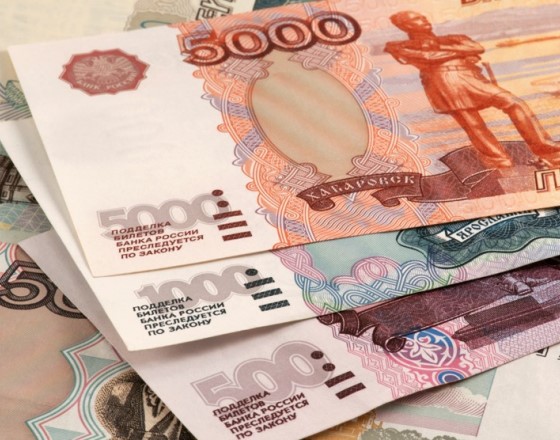
The Russian ruble advanced last week amid a broad retreat in the US dollar, as rebounding oil pricesoutweighed underlying concerns about the health of the world’s ninth largest economy.
The dollar-to-ruble exchange rate declined 1.7% to close at 69.70 Friday, its second decline in the past three days. The USD/RUB closed down 3% for the week, breaking a five-week holding pattern that saw the exchange rate hover between 74 and 78.
The USD/RUB is down nearly 4% this year and is trading at its lowest level since December 23. Relative strength is below 50 and declining while the MACD is moving just below the zero line, signalling downward momentum.
The US dollar rebounded slightly Friday, but finished down 1.2% for the week on sharp losses against the euro. The dollar index, which tracks the performance of the greenback against a basket of six currencies, excluding the ruble, closed at 96.17 Friday. The dollar index has weakened 2.5% for the year, as a deteriorating economic outlook has pushed back expectations for another rate hike by the Federal Reserve.
The ruble has emerged as the best performing emerging market currency of 2016, as the combination of rising oil prices, a weaker dollar and accommodative policies from around the world have bolstered the relative strength of the Russian currency. Since reaching historic lows against the dollar and euro on January 21, the ruble has surged over 20% against major currencies.
Russia has also been at the centre of negotiations with global energy producers about scaling back output in order to support prices. Last month Russia and Saudi Arabia agreed to freeze production at January levels, marking the first cooperation between OPEC and non-OPEC nations in 15 years. The coordinated move between the world’s two largest oil producers raised hopes that further cooperation would take place between Russia and the 12-member oil cartel. OPEC members Venezuela and Qatar have also agreed to freeze output.
Russian energy minister Alexander Novak told news outlets last week that Russia and Saudi Arabia are scheduled to meet between March 20 and April 1. The Russian-Saudi-led initiative has helped trigger a massive rally in global crude prices, leading the International Energy Agency (IEA) to declare last week that oil prices may have already “bottomed out.”
Since hitting 13-year lows on February 11, US crude futures have rallied nearly 50%. The West Texas Intermediate (WTI) futures contract closed up 66 cents or 1.7% at $38.50 Friday. Global benchmark Brent crude has rallied more than 40% since the January 20 low of $27.88 a barrel. It closed at $40.39 a barrel Friday, gaining 34 cents or 0.9% for the day.
The 20-month rout in oil prices has sunk the Russian economy and created expectations for further cratering in the next 12 months. Russia’s gross domestic product (GDP) – the value of all goods and services produced in the $2 trillion economy, contracted 3.7% in 2015. The International Monetary Fund (IMF) expects Russia’s GDP to contract a further 1% this year as the economy adjusts to lower commodity prices.
The Russian economy has contracted in each of the past five quarters. A recovery in oil prices will help the economy recalibrate, although Western-backed sanctions will make it difficult for Russia to stage a full recovery. The European Union announced last Thursday that it plans to extend its sanctions against 146 Russian and Ukrainian individuals and companies by an additional six months.
The EU said the sanctions were extended for Russia’s “continuing undermining or threatening of the territorial integrity, sovereignty and independence of Ukraine.”
The sanctions were implemented in 2014 over Russia’s alleged involvement in destabilizing Ukraine.
Russia’s deepening recession could impact other countries in the region. The Commonwealth of Independent States – a regional organization formed during the dissolution of the Soviet Union in 1991 – will struggle to keep its head above water in 2016. The region’s economy is forecast to stagnate this year after contracting 2.8% in 2015, according to the IMF. By comparison, emerging markets and developing economies as a whole are forecast to grow 4.3% in all of 2016.
Looking ahead to next week, several events could impact the performance of oil and the USD/RUB exchange rate. The Federal Reserve will meet in Washington on Tuesday and Wednesday to discuss monetary policy and set the interest rate. While no change to the federal funds rate is expected, the official policy statement may provide clues about the future path of US interest rates.
The US government will also produce economic reports on retail sales, inflation and factory production, which could influence the performance of the dollar.
original source: http://www.economiccalendar.com/2016/03/13/usdrub-at-2016-lows-as-russian-economy-struggles-to-recover-from-oil-crisis/
